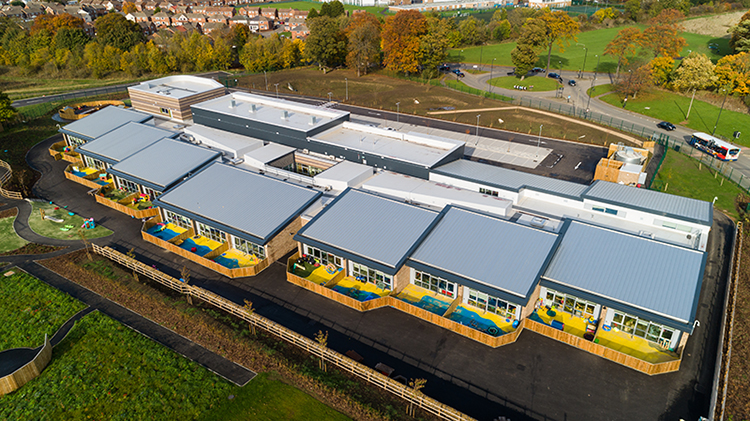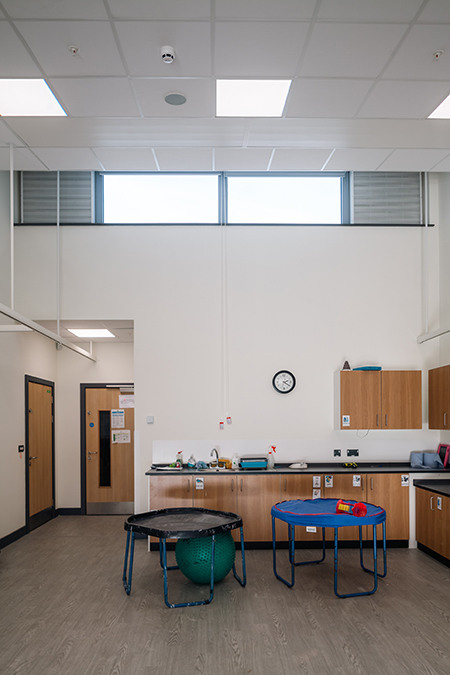
From removing pollutants to boosting concentration levels, improving indoor air quality is one of the most important considerations when creating educational facilities that are comfortable to use and cost-effective to maintain. Huw Poppy, business operations manager with ventilation specialist Passivent looks at natural and hybrid ventilation strategies for schools and why early engagement within the supply chain is essential.
Why is ventilation so important?
The link between good ventilation and wellbeing is well documented and it can have a huge effect on productivity making it an essential consideration for the education sector. Appropriate ventilation can help control CO2 levels, remove potentially harmful pathogens carried in exhaled breath, and help maintain a more comfortable interior temperature.
Any conversations around ventilation in schools must be informed by the requirements of Building Bulletin 101 “Guidelines on ventilation, thermal comfort and indoor air quality in schools” and Building Bulletin 93 “Acoustic design of schools – performance standards”, as well as the new updates to the Building Standards as outlined in the June 2023 edition of the non-domestic technical handbook. The chosen ventilation strategy should also contribute to a reduction in both carbon emissions and operational costs over the whole life of the building.
In accordance with BB101, natural ventilation in schools needs to be such that it achieves a daily average concentration of carbon dioxide of less than 1500ppm during the occupied period and should not exceed 2000ppm for more than 20 consecutive minutes each day at full capacity. Hybrid ventilation in schools however has more onerous targets and the figures are 1000ppm and 1500ppm respectively for the same conditions described above for natural ventilation. It’s also important that the building maintains an even temperature throughout the year with summertime thermal performance considered to prevent overheating.
Natural benefits
Essentially, natural ventilation is the method of ventilating an internal space without the requirement of fans. Such systems are reliant on several natural forces such as external-to-internal temperature difference, wind pressure and buoyancy – essentially the force that makes warm air rise. As a result, natural ventilation systems are less energy-intensive than other systems, resulting in lower carbon emissions and energy bills, and they also require minimal ongoing maintenance.
However, to fully utilise all the benefits of natural ventilation, it must be considered at early design stage to allow for cross flow of air, stacks and general planning of air paths and circulation throughout the building.
Maintaining a comfortable interior temperature is also an important consideration and it is possible to design fully naturally ventilated spaces so that incoming air is tempered. This involves the natural mixing of air as it enters the occupied zone when the natural ventilation inlets are sufficiently high enough so as not to cause a cold draught. For more standard floor to ceiling heights (typically 2.7m in classrooms for example), this can also be achieved using a heating coil or by placing inlets behind radiators.
The passive nature of this type of ventilation also means there is no disturbing noise from fans so acoustic requirements can be successfully met. As a result, natural ventilation strategies are ideally suited for use in schools for children with special educational needs and disabilities.
Another benefit of adopting a natural ventilation strategy is the aesthetic value they can offer. Conventional mechanical systems which incorporate fans and mixing chambers must be contained within conspicuous housings. This can impact on headroom clearance and daylighting, as traditional units need to be installed at a high level which can potentially block glazing and affect lux levels.

The hybrid choice
When a project will not lend itself to a fully natural ventilated system, or when certain areas need an individual solution, hybrid ventilation can provide an effective compromise. These systems feature low power consumption fans but have different settings that can be controlled and used only when needed. Importantly, this includes a passive mode so that for the most part, they can still offer many of the key benefits of natural ventilation.
For example, the system can be set to supply fresh air during the day via natural ventilation but can provide a ‘boost’ when CO2 or temperature levels increase. They also provide a ‘mixing’ function so that incoming air can be combined with room air to avoid cold draughts in the winter, and can include heater coils which can be used as a primary heat source in the space.
Close and early collaboration within the supply chain is essential to ensuring the most appropriate ventilation strategy is implemented. By tapping into the expertise and technical knowledge of specialists such as Passivent, the ‘performance gap’ between how ventilation strategies are designed and how they work in practice can also be avoided.








